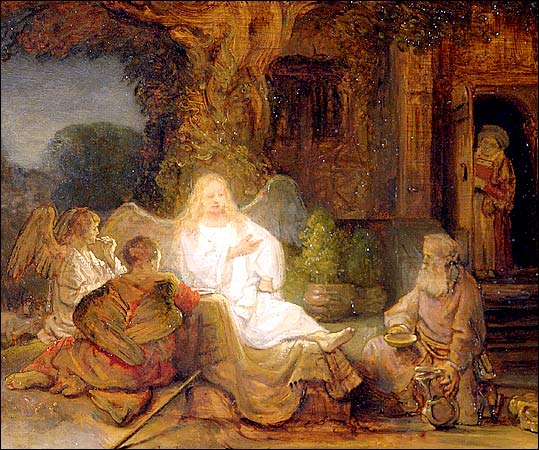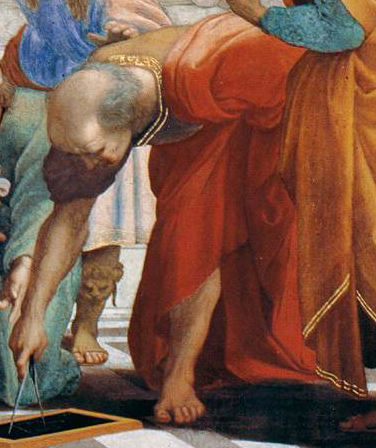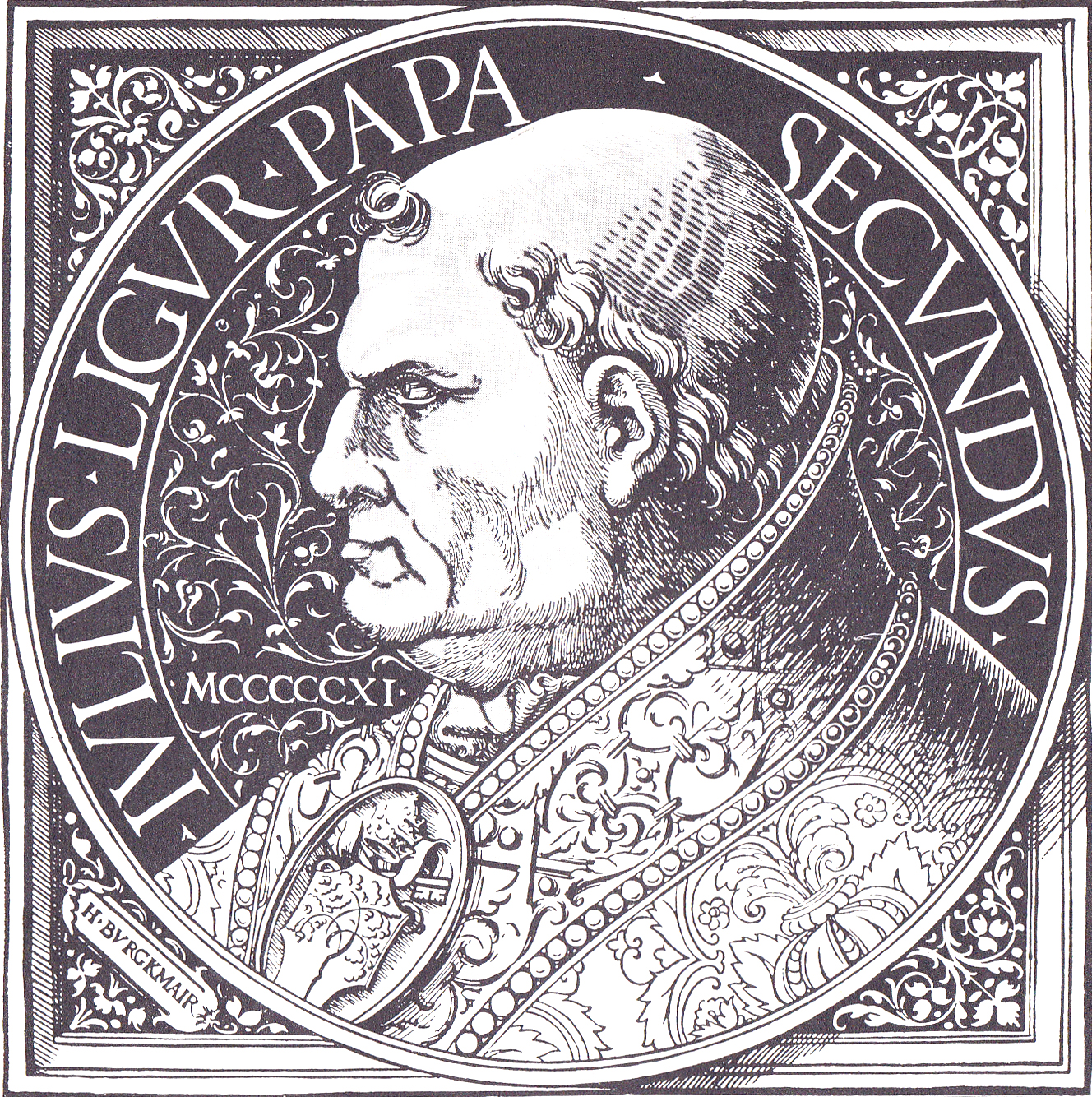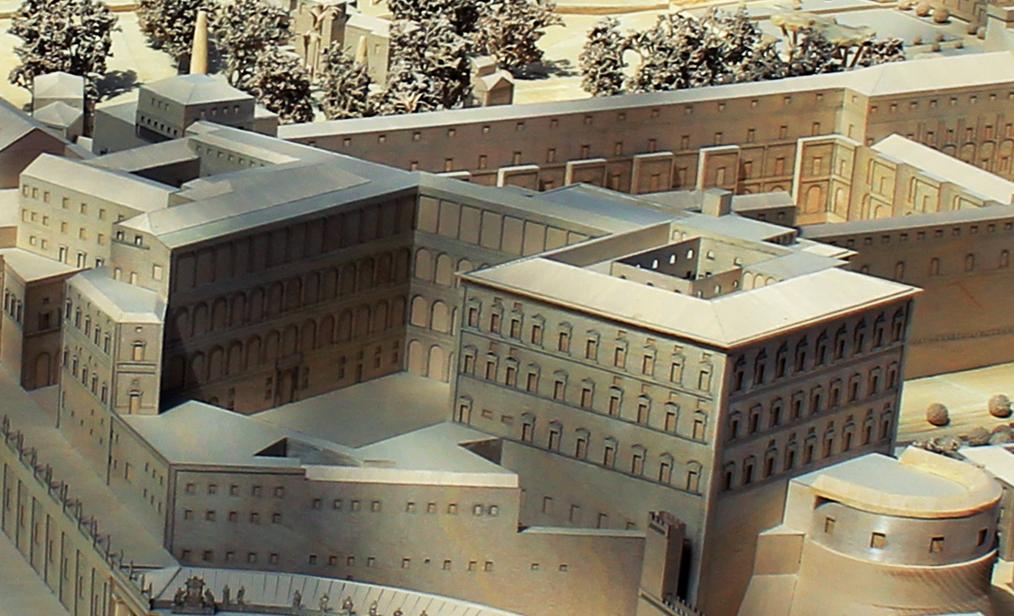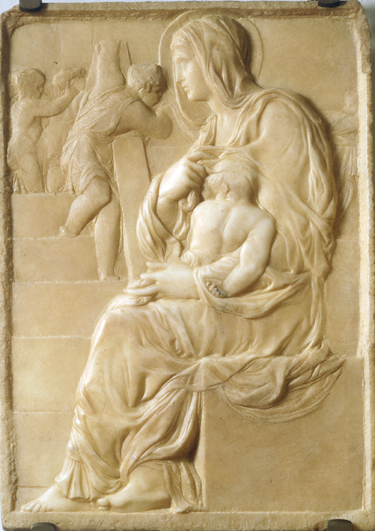|
Raphael
Raffaello Sanzio da Urbino (; March 28 or April 6, 1483April 6, 1520), now generally known in English as Raphael ( , ), was an Italian painter and architect of the High Renaissance. List of paintings by Raphael, His work is admired for its clarity of form, ease of composition, and visual achievement of the Platonism in the Renaissance, Neoplatonic ideal of human grandeur. Together with Leonardo da Vinci and Michelangelo, he forms the traditional trinity of great masters of that period. His father Giovanni Santi was court painter to the ruler of the small but highly cultured city of Urbino. He died when Raphael was eleven, and Raphael seems to have played a role in managing the family workshop from this point. He probably trained in the workshop of Pietro Perugino, and was described as a fully trained "master" by 1500. He worked in or for several cities in north Italy until in 1508 he moved to Rome at the invitation of Pope Julius II, to work on the Apostolic Palace at Vatican ... [...More Info...] [...Related Items...] OR: [Wikipedia] [Google] [Baidu] |
List Of Paintings By Raphael
The following is a list of paintings by the Italian Renaissance painter Raphael. Together with Michelangelo and Leonardo da Vinci he forms the traditional trinity of great masters of that period. He was enormously prolific. Despite his early death at 37, a large body of work remains, especially in the Vatican, where Raphael and a large team of assistants, executing his drawings under Raphael's direction, frescoed the Raphael Rooms known as the Stanze. He was extremely influential in his lifetime, but after his death the influence of his rival Michelangelo was more widespread until the 18th and 19th centuries, when his more tranquil qualities were again widely taken as models. List of paintings See also *Portrait of a Young Man (Raphael), ''Portrait of a Young Man'' (Raphael) *Saint John the Baptist in the Desert (Raphael), ''Saint John the Baptist in the Desert'' (Raphael) Footnotes Notes References * * Further reading * Christof Thoenes. ''Raphael''. TASCHEN. 2007. * Offic ... [...More Info...] [...Related Items...] OR: [Wikipedia] [Google] [Baidu] |
Raphael (archangel)
Raphael ( , ; "God has healed") is an archangel first mentioned in the Book of Tobit and in 1 Enoch, both estimated to date from between the 3rd and 2nd century BCE. In later Jewish tradition, he became identified as one of the three heavenly visitors entertained by Abraham at the Oak of Mamre. He is not named in either the New Testament or the Quran, but later Christian tradition identified him with healing and as the angel who stirred waters in the Pool of Bethesda in John 5:2–4, and in Islam, where his name is Israfil, he is understood to be the unnamed angel of Quran 6:73, standing eternally with a trumpet to his lips, ready to announce the Day of Judgment. In Gnostic tradition, Raphael is represented on the Ophite Diagram. Origins in post-exilic literature In the Hebrew Bible, the word () means messenger or representative; either human or supernatural in nature. When used in the latter sense it is translated as "angel". The original mal'akh lacked both individua ... [...More Info...] [...Related Items...] OR: [Wikipedia] [Google] [Baidu] |
Raphael Rooms
The four Raphael Rooms () form a suite of reception rooms in the Apostolic Palace, now part of the Vatican Museums, in Vatican City. They are famous for their frescoes, painted by Raphael and his workshop. Together with Michelangelo's Sistine Chapel ceiling frescoes, they are the grand fresco sequences that mark the High Renaissance in Rome. The ''Stanze'', as they are commonly called, were originally intended as a suite of apartments for Pope Julius II. He commissioned Raphael, then a relatively young artist from Urbino, and his studio in 1508 or 1509 to redecorate the existing interiors of the rooms entirely. It was possibly Julius' intent to outshine the apartments of his predecessor (and rival) Pope Alexander VI, as the ''Stanze'' are directly above Alexander's Borgia Apartment. They are on the second floor, overlooking the south side of the Belvedere Courtyard. Running from east to west, as a visitor would have entered the apartment, but not following the sequence in which ... [...More Info...] [...Related Items...] OR: [Wikipedia] [Google] [Baidu] |
Transfiguration (Raphael)
''The Transfiguration'' is the last painting by the Italian High Renaissance Old Master, master Raphael. Cardinal Giulio de Medici – who later became Pope Clement VII (in office: 1523–1534) – commissioned the work, conceived as an altarpiece for Narbonne Cathedral in France; Raphael worked on it in the years preceding his death in 1520. The painting exemplifies Raphael's development as an artist and the culmination of his career. Unusually for a depiction of the Transfiguration of Jesus in Christian art, the subject is combined with the next episode from the Gospels (the healing of a possessed boy) in the lower part of the painting. The work is now in the Vatican Museums#Pinacoteca Vaticana, Pinacoteca Vaticana in the Vatican City. From the late 16th century until the early 20th century, various commentators regarded it as the most famous oil painting in the world. History of the painting By December 1517, the latest date of commission, Pope Clement VII, Cardinal Giulio de ... [...More Info...] [...Related Items...] OR: [Wikipedia] [Google] [Baidu] |
The School Of Athens
''The School of Athens'' () is a fresco by the Italian Renaissance artist Raphael. It was painted between 1509 and 1511 as part of a commission by Pope Julius II to decorate the rooms now called the in the Apostolic Palace in Vatican City. The fresco depicts a congregation of ancient philosophers, mathematicians, and scientists, with Plato and Aristotle featured in the center. The identities of most figures are ambiguous or discernable only through subtle details or allusions; among those commonly identified are Socrates, Pythagoras, Archimedes, Heraclitus, Averroes, and Zarathustra. Additionally, Italian artists Leonardo da Vinci and Michelangelo are believed to be portrayed through Plato and Heraclitus, respectively. Raphael included a self-portrait beside Ptolemy. Raphael is the second character who is looking directly at the viewer in the artwork, the first being Hypatia - a woman in the white robe, who stands between Parmenides and Pythagoras. The painting is notable fo ... [...More Info...] [...Related Items...] OR: [Wikipedia] [Google] [Baidu] |
Sistine Madonna
The ''Sistine Madonna'', also called the ''Madonna di San Sisto'', is an oil painting by the Italian artist Raphael. The painting was commissioned in 1512 by Pope Julius II for the church of San Sisto, Piacenza, and probably executed ''c.'' 1513–1514. The canvas was one of the last Madonnas painted by Raphael. Giorgio Vasari called it "a truly rare and extraordinary work". The painting was moved to Dresden from 1754 and is well known for its influence in the German and Russian art scene. After World War II, it was relocated to Moscow for a decade before being returned to Germany. Composition The oil on canvas painting measures 265 cm by 196 cm. In the painting the Madonna, holding Christ Child and flanked by Saint Sixtus and Saint Barbara, stands on clouds before dozens of obscured putti, while two distinctive winged putti rest on their elbows beneath her. Painting materials Pigment analysis of Raphael's masterpiece reveals the usual pigments of the renaiss ... [...More Info...] [...Related Items...] OR: [Wikipedia] [Google] [Baidu] |
Pope Julius II
Pope Julius II (; ; born Giuliano della Rovere; 5 December 144321 February 1513) was head of the Catholic Church and ruler of the Papal States from 1503 to his death, in February 1513. Nicknamed the Warrior Pope, the Battle Pope or the Fearsome Pope, it is often speculated that he had chosen his papal name not in honor of Pope Julius I but in emulation of Julius Caesar. One of the most powerful and influential popes, Julius II was a central figure of the High Renaissance and left a significant cultural and political legacy. As a result of his policies during the Italian Wars, the Papal States increased their power and centralization, and the office of the papacy continued to be crucial, diplomatically and politically, during the entirety of the 16th century in Italy and Europe. In 1506, Julius II established the Vatican Museums and initiated the rebuilding of the St. Peter's Basilica. The same year he organized the famous Swiss Guard for his personal protection and commanded a su ... [...More Info...] [...Related Items...] OR: [Wikipedia] [Google] [Baidu] |
Apostolic Palace
The Apostolic Palace is the official residence of the Pope, the head of the Catholic Church, located in Vatican City. It is also known as the Papal Palace, the Palace of the Vatican and the Vatican Palace. The Vatican itself refers to the building as the Palace of Sixtus V, in honor of Pope Sixtus V, who built most of the present form of the palace. The building contains the papal apartments, various offices of the Catholic Church and the Holy See, private and public chapels, the Vatican Museums, and the Vatican Library, including the Sistine Chapel, Raphael Rooms, and the Borgia Apartments. The modern tourist can see these last and other parts of the palace, but other parts, such as the Sala Regia (Vatican), Sala Regia (Regal Room) and Cappella Paolina, had long been closed to tourists, though the Sala Regia allowed occasional tourism by 2019. The Scala Regia (Vatican), Scala Regia (Regal Staircase) can be viewed from one end and used to enter the Sala Regia. The Cappella Paoli ... [...More Info...] [...Related Items...] OR: [Wikipedia] [Google] [Baidu] |
High Renaissance
In art history, the High Renaissance was a short period of the most exceptional artistic production in the Italian states, particularly Rome, capital of the Papal States, and in Florence, during the Italian Renaissance. Most art historians state that the High Renaissance started between 1490 and 1500, and ended in 1520 with the death of Raphael, although some say the High Renaissance ended about 1525, or in 1527 with the Sack of Rome (1527), Sack of Rome by the mutinous army of Charles V, Holy Roman Emperor, or about 1530. The best-known exponents of painting, sculpture and architecture of the High Renaissance include Leonardo da Vinci, Michelangelo, Raphael, and Bramante. In the 21st century, the use of the term has been frequently criticized by some academic art historians for oversimplifying artistic developments, ignoring historical context, and focusing only on a few iconic works. Origin of term The art historian Jill Burke was the first to trace the historical origins of t ... [...More Info...] [...Related Items...] OR: [Wikipedia] [Google] [Baidu] |
Michelangelo
Michelangelo di Lodovico Buonarroti Simoni (6March 147518February 1564), known mononymously as Michelangelo, was an Italian sculptor, painter, architect, and poet of the High Renaissance. Born in the Republic of Florence, his work was inspired by models from classical antiquity and had a lasting influence on Western art. Michelangelo's creative abilities and mastery in a range of artistic arenas define him as an archetypal Renaissance man, along with his rival and elder contemporary, Leonardo da Vinci. Given the sheer volume of surviving correspondence, sketches, and reminiscences, Michelangelo is one of the best-documented artists of the 16th century. He was lauded by contemporary biographers as the most accomplished artist of his era. Michelangelo achieved fame early. Two of his best-known works, the ''Pietà (Michelangelo), Pietà'' and ''David (Michelangelo), David'', were sculpted before the age of 30. Although he did not consider himself a painter, Michelangelo created ... [...More Info...] [...Related Items...] OR: [Wikipedia] [Google] [Baidu] |


